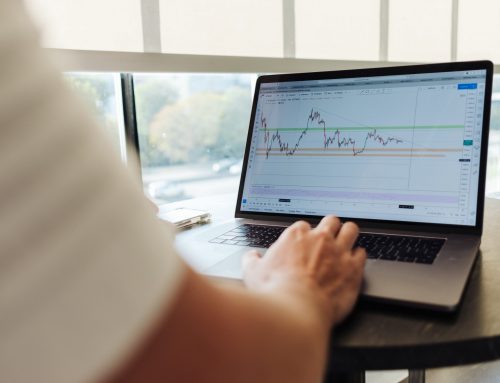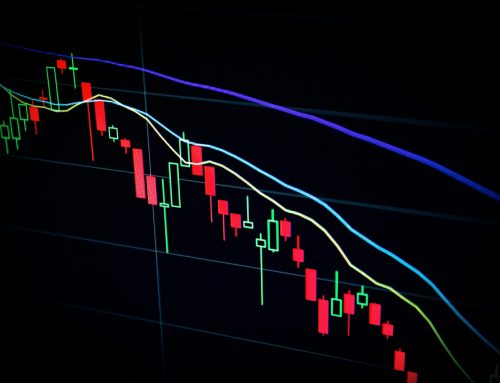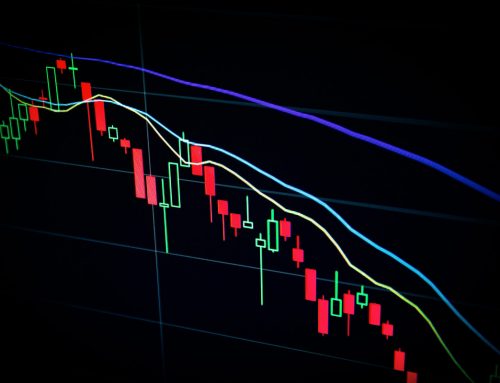The stochastic oscillator is one of the best stock indicators for guiding traders through the market’s ebbs and flows. Mastering the best stochastic settings for swing trading, from the standard 14, 3, 3 to more aggressive and conservative configurations, helps you be more precise.
But navigating these settings doesn’t have to be complex. In fact, there’s an easier way to trade WITHOUT complex technical indicators, or noisy fundamental data. VectorVest’s stock forecasting software eliminates traditional analysis, saving you time and stress while helping you win more trades with less work.
It’s outperformed the S&P 500 index by 10x over the past two decades while calling every major market move along the way. We invite you to find out firsthand why it’s the best swing trading platform.
Or, keep reading below to learn more about the optimal stochastic settings for various trading scenarios and get practical tips for effective application.
An Overview of the Stochastic Oscillator
The stochastic oscillator is one of the best swing trading indicators for finding potential trend reversals. Developed in the 1950s by George Lane, it has stood the test of time, offering a window into market dynamics for successful trading strategies.
The Stochastic Oscillator measures momentum by comparing a particular closing price of a security to a range of its prices over a certain period. It’s expressed in a range of 0 to 100.
The indicator consists of two lines – the %K (main line) and the %D (signal line). The %K line represents the current market rate for the security, while the %D line is a moving average of the %K line. These lines oscillate between the overbought (above 80) and oversold (below 20) levels.
These lines crossing each other is a key signal for traders. A crossover above the 80 level might indicate an overbought condition (potential sell signal), while a crossover below the 20 level may suggest an oversold condition (potential buy signal).
Why Use a Stochastic Oscillator?
What makes the stochastic oscillator a worthy addition to your stock picking strategy, though? Here are a few use cases for this indicator:
- Identifying Overbought and Oversold Conditions: Identify potential reversal points in both bullish and bearish markets by confirming overbought and oversold conditions. It helps you figure out when to buy a stock and when to sell a stock for profit.
- Versatility Across Timeframes: It can be applied across various swing trade time frames, making it a flexible tool for day trading vs swing trading and even long-term.
- Complementing Other Analysis: It works in conjunction with other technical analysis tools for swing trading for a more comprehensive view of market conditions and potential trade opportunities.
Keep in mind, these benefits are all contingent on using the best stochastic settings for swing trading. It’s also important you’re aware of the potential limitations. Like all indicators, it’s not immune to false signals, particularly in volatile markets where price movements can be erratic.
It can also sometimes lag behind the actual market movements since it’s a momentum indicator. This can lead to delayed entry or exit signals, impacting the effectiveness of trades.
That being said, it is an excellent way to uncover swing trade patterns to inform your trading strategy. But, you need to fine-tune your settings to make the most of this indicator…
The Best Stochastic Oscillator Settings for Swing Trading
As we said from the start, there are no inherent “best” stochastic oscillator settings – it all depends on your unique swing trading strategy. That being said, we’ll offer recommendations below based on the specific style you employ.
Standard Settings for General Swing Trading
The most commonly used stochastic oscillator settings for general swing trading are 14, 3, 3. This means the %K line is set to 14 periods, and the %D line (the signal line) is a 3-period moving average of the %K line. Additionally, a 3-period smoothing is often applied to %K.
These settings provide a balanced view, suitable for typical swing trading scenarios where the trader is looking to capture medium-term market movements. They are responsive enough to provide timely signals but not so sensitive that they generate excessive noise.
Short-Term Aggressive Swing Trading Settings
More aggressive swing traders might opt for faster settings like 5, 3, 3. This setting reduces the calculation period for %K to 5 and keeps %D and the smoothing period the same.
While these settings make the oscillator more responsive to recent price changes, they also increase the risk of false signals. This approach is suitable for traders who are comfortable with a higher level of risk and are adept at quickly responding to rapid market changes.
Long-Term Conservative Swing Trading Settings
Conservative traders who prefer to engage in longer-term swing trades might find settings like 21, 9, 9 more suitable. This configuration slows down the oscillator, making it less sensitive to short-term price movements.
These settings are beneficial for identifying more significant, sustained market trends while filtering out short-term fluctuations. It suits traders who have a longer holding period and prefer a more measured approach to swing trading.
Sector-Specific Stochastic Oscillator Settings
Different sectors can exhibit varying degrees of price volatility and trend characteristics. Adjusting the stochastic oscillator settings to align with the specific volatility and trend patterns of a sector can yield more accurate signals.
In a highly volatile sector like technology, a slightly faster setting (e.g., 9, 3, 3) might be effective. In contrast, for more stable sectors like utilities, a slower setting (e.g., 21, 9, 9) could provide better results, capturing longer-term trends with fewer false alarms.
Optimizing for Different Chart Timeframes
It might help to think about the best stochastic settings differently, looking at the specific chart you use rather than aligning with your trading strategy.
1-Minute Chart
Use settings: 5, 2, 2
You want maximum sensitivity on a 1-minute chart. This gives you fast signals for quick in-and-out trades, but be ready for some noise.
5-Minute Chart
Use settings: 9, 3, 3
Still fast-moving, but slightly more balanced. You’ll catch short swings while filtering out some of the false moves common in lower timeframes.
15-Minute Chart
Use settings: 14, 3, 3
This is a go-to setup for traders looking for intraday swings. It strikes a solid balance between signal speed and reliability.
30-Minute Chart
Use settings: 21, 5, 5
Slowing it down here helps you avoid getting whipsawed. Great for trades that play out over a day or two.
1-Hour Chart
Use settings: 21, 9, 3
This gives you a slightly smoothed view of momentum, ideal for swing trades that last several days.
Daily Chart
Use settings: 14, 3, 3
The classic daily setup. It’s responsive enough to alert you to trend changes without being overly reactive.
Weekly Chart
Use settings: 21, 9, 9
For position trades or longer-term swings, this helps filter out short-term volatility and gives a clearer view of big-picture trends.
How to Actually Apply These Adjusted Settings
Choosing the best stochastic settings is just the first step – then you need to input them in your charting platform. Most solutions, be it TradingView, Thinkorswim, or MetaTrader, let you customize the %K, %D, and smoothing values in the indicator settings.
Set those values, then apply the indicator to your preferred timeframe. From there, use crossovers, overbought/oversold levels, and divergence patterns to identify trade setups.
Just remember – settings alone won’t make the trade. You still need confirmation.
Backtesting Your Stochastic Settings for Confirmation
Backtesting means applying the adjusted parameters to historical price data and seeing how well they would’ve worked in past trades. You’re looking for two things: consistency and clarity. Do the signals help you avoid bad trades and catch strong trends? Adjust if not.
Most trading platforms offer backtesting features, or you can manually scroll through charts to see how the signals play out. It’s tedious, but necessary. This is how you build confidence and filter out setups that look good in theory but fall apart in real time.
What We See Traders Struggle With
The stochastic oscillator can be great – but even with the right settings, we see traders struggle with a few things in particular. We want to help you avoid these slip-ups.
The biggest issue is overfitting, tweaking stochastic settings to match past price action too perfectly. It may look great on a backtest, but it rarely holds up in real markets. You’re essentially curve-fitting noise and calling it insight.
Another issue is reacting to false signals. You’ll get whipsawed if you dial in settings that are too sensitive. Every move looks like a trend reversal, and you end up chasing price instead of following it. That leads to overtrading and confusion.
Then there’s volatility. Most traders forget to adjust their settings based on how fast the market is moving. What works in a calm market will likely fail in high-volatility conditions. You need to slow things down (or speed them up) accordingly.
Another thing that gets traders into trouble is failing to accurately align their strategy with the timeframe they’re using. You can’t expect to scalp using daily chart signals or swing trade using a 1-minute setup. Match your stochastic settings to how long you plan to hold the trade.
And even if you nail everything above, markets are constantly evolving right before our eyes. A setup that worked well six months ago may need refining today. This is why we always recommend reviewing and adjusting your settings regularly, rather than reading our tips on the best stochastic settings and calling it good from here on out.
Tips on Using the Best Stochastic Settings for Swing Trading
Utilizing the stochastic oscillator effectively in swing trading involves more than just setting it correctly. It’s about interpreting its signals accurately, combining it with other analysis methods, and incorporating it into your risk management strategies.
Interpreting Stochastic Signals Accurately
The stochastic oscillator indicates when the market is overbought (above 80) or oversold (below 20). However, remember that the oscillator can remain in these zones for an extended period in strong trends. Hence, it’s crucial to look for additional confirmation before acting on these signals.
Pay attention to when the %K line crosses above or below the %D line. A crossover above the %D line in oversold territory can signal a potential buying opportunity, while a crossover below the %D line in overbought territory might indicate a selling point.
Divergences between the Stochastic Oscillator and price action can be powerful signals. A bullish divergence occurs when the price records a lower low, but the oscillator forms a higher low, suggesting weakening downward momentum.
Conversely, a bearish divergence occurs when the price hits a higher high, but the oscillator forms a lower high, indicating decreasing upward momentum.
Combining Stochastic with Price Action and Other Indicators
This indicator is just one piece of the puzzle, which is why we encourage you to learn how to combine fundamental and technical analysis to gain the best possible insights and always approach each opportunity with a comprehensive view. Here are some additional ways to vet and execute your trades:
- Synergy with Candlestick Patterns: Combine Stochastic readings with the best candlestick patterns for swing trading for a more comprehensive analysis. For instance, a bullish engulfing pattern near an oversold area can reinforce a buy signal.
- Using Support and Resistance Levels: Align Stochastic signals with key support and resistance levels. For example, a Stochastic signal that coincides with a price rebound from a significant support level could indicate a strong buy opportunity.
- Integrating Other Indicators: Pair the Stochastic Oscillator with other technical indicators like the best moving averages for swing trading, RSI, or MACD for enhanced signal reliability. This multi-indicator approach can help filter out false signals and confirm trade entries and exits.
You should also stay up to date on the market sentiment indicator so that you are investing at the right time.
Risk Management Strategies with Stochastic
Establish stop-loss orders to manage risk based on stochastic signals. For instance, if entering a trade on a bullish stochastic crossover, consider placing a stop-loss below a recent swing low.
Adjust your position size based on the strength of the Stochastic signal and the overall market conditions. In more volatile markets or when signals are weaker, it might be prudent to reduce position size.
Set clear profit targets and consider using trailing stops to protect gains. If the Stochastic Oscillator begins to signal a reversal, it might be time to exit the trade or adjust the trailing stop to lock in profits.
Set up swing trade alerts for these exit points to help you eliminate emotion and human error from clouding your judgment. While cutting your losses sucks, it’s better than being stubborn and watching your account blow up!
Introducing a Simpler Way to Analyze Stocks and Execute Trades
We hope you feel confident in how to use the best stochastic settings for swing trading after reading this guide. But wouldn’t it be nice if you could uncover winning opportunities on autopilot and analyze them at a glance rather than relying on complex, time-consuming indicators?
This is where VectorVest comes in.
Known as the best app for stock analysis, VectorVest helps you win more trades with less work and stress through a proprietary stock rating system. You’re given all the information you need in three easy-to-understand ratings: relative value (RV), relative safety (RS), and relative timing (RT).
Each sits on a simple scale of 0.00-2.00 with 1.00 being the average for effortless interpretation. You’re even offered a clear buy, sell, or hold recommendation for any given stock at any given time. It doesn’t get much better than this!
Whether you want to learn how to find stocks to swing trade or how to find stocks to day trade, how to pick stocks for options trading, or you want to swing trade options – VectorVest can help.
Learn more about how it works with a free stock analysis today. Or, get started with a risk-free trial and transform your trading strategy for the better!
Bringing Our Conversation on the Best Stochastic Settings for Swing Trading to a Close
As we conclude our exploration of the best stochastic settings for swing trading, we want to reiterate the importance of fine-tuning this indicator to make the most of it.
We’ve shared some of the best settings for general swing trading, aggressive settings for short-term strategies, and conservative settings for the long-term approach, with sector-specific adjustments for nuanced accuracy. You also can feel confident in interpreting its signals, effectively combining it with other indicators, and embedding it into risk management strategies.
Our blog has more tips on swing trading for beginners. You can learn how to swing trade with resources like how to buy the dip, how much to start swing trading, is swing trading profitable, positional trading vs swing trading, swing trading pros and cons, timing the market vs time in the market, and more swing trading basics.
Whether you’re looking to make a little cash on the side or you’re considering swing trading for a living, investing in our stock advisory will pay for itself within the first few trades. It helps you uncover the best swing trading stocks or the best starter stocks, the best ETFs for swing trading, or anything in between.
But, what makes it really powerful is how it saves you time and stress associated with traditional technical analysis, all while boosting your performance. What more could you ask for? Invest in your trading success with VectorVest – a decision that’s both smart and timely!
Frequently Asked Questions
How reliable is the stochastic oscillator for trend and shift prediction?
It’s really useful for spotting momentum shifts, especially in range-bound markets. It’s less reliable in strong trends unless paired with other indicators for confirmation.
Can I use these settings for day trading and/or swing trading?
Absolutely – you just need to make sure you’re using the best stochastic settings for swing trading or day trading, respectively. Shorter settings work better for intraday trades, while longer settings help filter noise in swing trades.
What are the best stochastic settings for swing trading specifically?
The common baseline is 14, 3, 3. Or, you could try 5, 3, 3 for more aggressive entries. 21, 9, 9 tends to smooth out false signals for longer holds. You might use all three at some point or another.
Does the stochastic oscillator work well for trading ETFs and other derivatives?
Yes, but be mindful of ETF structure. Some track assets more smoothly than others. Liquidity and volatility matter more than the instrument type.
Can I use stochastic settings for Forex trading?
Absolutely. Just remember Forex is highly volatile and runs 24/5, so faster settings (like 9, 3, 3) tend to be more responsive.
How do I adapt my settings in a more volatile market?
Shorten the %K period for quicker reaction or increase the smoothing to dampen noise. Test both and see what fits your style.
What are key levels in stochastic oscillator settings?
80 is typically overbought, 20 is oversold. But those are guidelines, not rules – context always matters.
What are moving averages, and how do they impact stochastic settings?
Moving averages smooth out price action, and can be used to control how the %D line reacts in stochastic oscillations. Longer MAs slow down signals, shorter ones speed them up.
How do support and resistance come into play?
Overbought or oversold readings near key support/resistance levels can strengthen a signal. Use them to confirm or question what the oscillator is telling you.
How do different forms of the stoch oscillator impact your trading strategy?
Fast stochastics are more reactive, while slow or full stochastics give much cleaner signals. You’ll choose different settings based on how quickly you need to act.
How do stochastic oscillator lines interact with price charts?
The %K line follows price momentum; the %D line smooths it out. The %K crossing %D is your signal, but only if price action supports it.







Leave A Comment